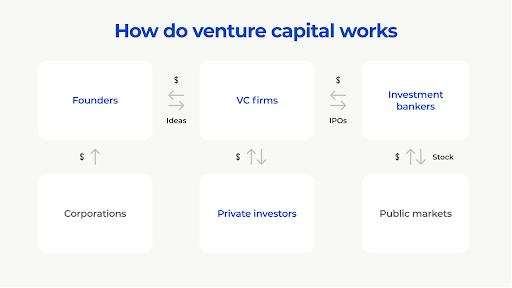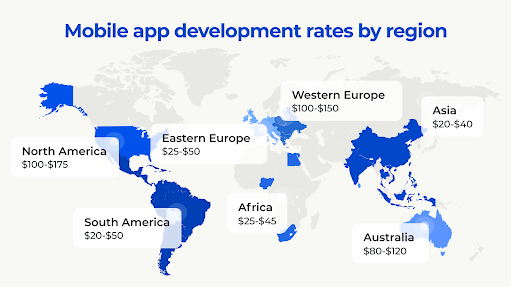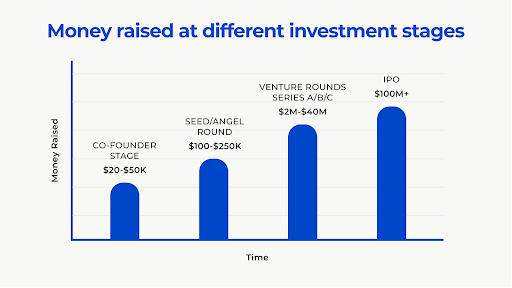Technology Startup Investment funding might be difficult. To successfully turn the concept into a prosperous business, founders should properly sell their ideas to investors. Moreover, they need to weigh all the startup pros and cons, finding beforehand the sources of investment. visit here
This post is prepared for you to consider how to get secure startup funding, what steps to pass through, where to find the money for startup rise, and more.
Table of Contents
How the Technology Startup Companies Receive Funding
First off, you should go through numerous stages or rounds (lasting from 3 months to 1 year). It will help you gather enough money for the startup growth.
Let’s look at the essential stages of startup funding.
The pre-seed stage is required for founders to boost their concepts and start their business. As a rule, they launch a startup with the help of a co-founder, start a crowdfunding campaign, or concentrate on angel investing during the early stages of their businesses.
Seed stage funding refers to the process of attracting so-called angel investors to support a tech startup. The monetary amount required at this stage is generally little to cover such company necessities as a business strategy, office rent, team recruiting, etc.
A-Series is needed to attract third-party funders that’ll help the company develop. You can pass through this level having a tried-and-true company concept, a sizable client base, and being already profitable.
B-Series. At this stage, tech startups are scaling and becoming businesses. After your business’s viability is demonstrated, it’s time to focus on expanding into other markets.
C-Series requires considerably more significant results from you. For example, your company is worth more than $100 million, and you’re searching for corresponding investments.
The initial public offering (IPO) is the last stage of a startup’s existence. It’s about selling shares in a private corporation to the general public.
Fundraising for a startup takes a lot of time and effort, as well as a well-thought-out company plan. But keep in mind that understanding each fundraising round can help you get financing earlier than other startups.
Funding Resources for Tech Startups
Having decided to raise funds, every tech startup founder should know about vital financial sources. So let’s look closer at the most common ones.
Crowdfunding is a fantastic method to get your business off the ground quickly. This means raising funds through online platforms (e.g., Kickstarter, Indiegogo). After the funds have been obtained, you may begin developing the startup concept.
Venture Capital (VC) is based on the collective investment of several organizations. A venture capitalist is a representative who manages funds and invests them in solid ventures.

Startup incubators are mentors for early-stage firms, conducting discussions, business lectures, and giving initial cash. Furthermore, they gradually introduce you to venture capital businesses.
Angel investors provide capital to various enterprises, including high-risk ventures. They also evaluate your idea, as well as the technical staff and early clients, to see whether it fits market demands.
What option is the most essential to choose? Today, successful Internet businesses such as Facebook, Twitter, or Airbnb use venture capital and angel financing as their primary funding sources.
What Do Technology Startups Use Funding For?
Stakeholders will better trust you if you have a functional, well-balanced website or app. So, the first fundraising round is required for MVP (minimum viable product) development to deploy the product quickly, gather early feedback, and get funding for further growth in Technology Startup Investment.
Now let’s go through the actions you should take before, during, and after the custom mobile application development process.
Market research is required to demonstrate that your product will be engaging. Investigate your top competitors’ MVPs at one of the paid survey platforms (e.g., Toluna) to analyze their strengths and take a note for your minimum viable product.
Get a good idea for MVP building. For that, you must first describe your clients’ concerns and determine whether your product can address them. Gathering users’ pain points, problems, and solutions will help you build an in-demand minimum viable product.
Define the essential features. Before looking for a tech partner to cooperate with, prepare a required functionality list for your future application. Remember that complex functionality and fashionable design are not necessary for MVP.
Compose a team. After you’ve made preparations, start looking for a dependable IT partner with proven competence in the sector. Consider the number of successfully completed projects, their complexity, the tech stack used, and the feedback from clients when selecting an IT provider.
Development stage. Now, you should focus on developing high-quality software. The steps of the software development process are the following:
- Discovery. Business analysts create a project specification detailing each feature and technical element. Next, designers make wireframes for each app screen.
- UI/UX design. Based on the wireframes confirmed by the customer in the previous stage, UI/UX designers build future app prototypes, screen by screen.
- Development. Using an appropriate tech stack, software developers turn mockups into operational products.
- Quality assurance (QA) engineers verify the product is bug-free and flawless, thoroughly testing all implemented functionality.
- Release. The product is delivered to the client together with all project documentation.
Initial investment receiving. An MVP beta testing under real-life conditions is essential before a meeting with investors to avoid any failures. After receiving an initial investment, you can work on more complex features for your solution.
How to Estimate Investments for a Technology Startup Investment
To produce a successful digital product and attract investors, carefully plan the software development budget. We’ve prepared some tips for you to consider while allocating the expenditures.
Define a platform. It has a significant impact on the cost of developing an app. Whether you design an app for one platform or others, the price will differ.
Estimate the features of your solution. The ultimate software development budget is directly affected by the functionality you wish to add to your application. So, it’s critical to make a list of features for forecasting the final budget appropriately.
Calculate your profit and create objectives. Set clear revenue targets before entering into product development. It will assist you in determining how long it will take to pay off the expenditures, when you may reinvest in adding advanced features, and whether or not additional investments are suitable.
Find a good team. If it’s hard to hire an in-house team and pay office rent, sick leaves, etc., you can choose a reputable outsourcing vendor that will assist you in developing a sought-after app to attract early investors. Outsourced app developers’ services (calculated according to hourly wages in the region) are less expensive than in-house ones, yet you can still obtain high-quality software.

As you can see, hourly wages vary widely worldwide. Eastern Europe appears to be a happy medium, with rates from $25 to $50 per hour and a high competency level. East European IT providers can offer custom software solutions at an affordable price.
Wrapping Up
The process of gathering funds for Technology Startup Investment is tiring and time-consuming but necessary for your future business success. To attract investors, you should first build an appropriate minimum viable product that will prove your idea is worth investing. A skillful outsourcing software development team can help you in it. The specialists will advise you on all the issues you’re worried about, help you build a high-class MVP, or implement your entire concept to create a profitable, modern, and competitive IT product.













